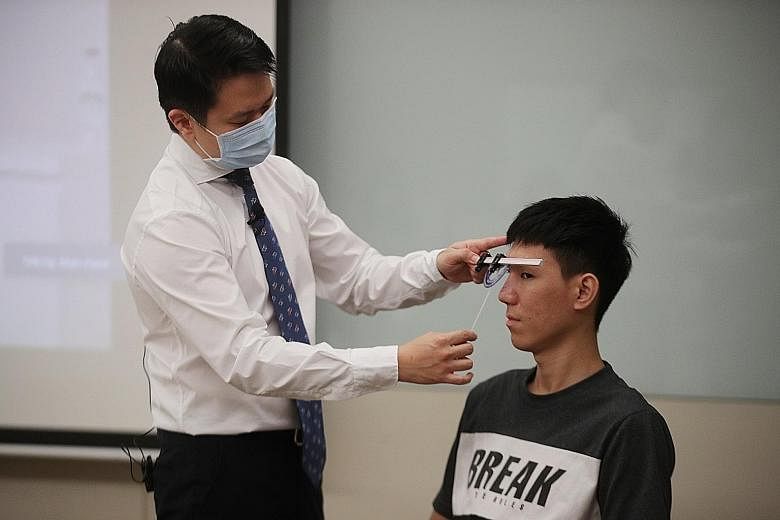Ng Teng Fong General Hospital has developed surgical techniques to treat nasal deformity in Asians. These include a new nose bone sculpting technique and instruments for nasal surgery, or rhinoplasty.
Dr Ng Chew Lip, 37, an ear, nose and throat surgeon trained in facial plastic surgery, introduced the techniques to cater to Asians, who he says have a "different nose structure and size".
"We needed our own rhinoplasty techniques and instruments," he told reporters at a media conference yesterday.
He estimated there are about 300 to 400 rhinoplasty procedures per year in Singapore.
Implanting a 1cm graft shaped from cartilage at the nose tip was one technique he adapted. As Asians generally have thicker nasal skin, this "princess and the pea" graft better projects and defines the tip, he said.
He also introduced preservation rhinoplasty, a method that retains most of the bridge instead of cutting it out. Its philosophy is to remove only what is necessary, aiming to preserve as much cartilage and bone as possible.
While this is more difficult to execute than removing the entire bridge, Dr Ng said it is less destructive compared with traditional methods, which may involve hammers and chisels used in bone cutting.
Preservation rhinoplasty also decreases post-operation swelling and bruising, which are common problems for patients, he added.
He said that he and his team are among the first to practise preservation rhinoplasty in Singapore and the rest of Asia.
For surgical instruments, he has devised a "rhinoscale" - a measurement device to better calculate the angle of nasal septum deviation, should the wall separating the nostrils be significantly displaced to one side. The prototype is being developed with the National University of Singapore.
Dr Ng also designed a cartilage mould via 3D printing, which allowed him to mould diced cartilage into customised grafts that are implanted. Previously, he had to use the cylindrical tube of a syringe for moulding, which was imprecise and could produce only one shape.
To date, Dr Ng has performed preservation rhinoplasty on 12 patients. The recovery period takes about six to seven months, but patients are able to go back to work in two weeks.
One of them is car mechanic Loo Jia Heng, 29, who fell on his nose in his kitchen last September.
The accident left him with a crooked nose bridge, which obstructed his airflow. He went for surgery on May 21 and was discharged within 24 hours.
"My nose is fixed and I am breathing much better," said Mr Loo. "I experienced little to no pain throughout surgery and recovery."
Celebrity food critic K.F. Seetoh went for the same procedure last October.
He fractured his nose from playing football some 30 years back, and has suffered from a collapsing bridge that also affected his sleep.
"It became almost unbearable in the last two years," said Mr Seetoh. "Now I can breathe and sleep so much better. I can smell food and spices better too."

